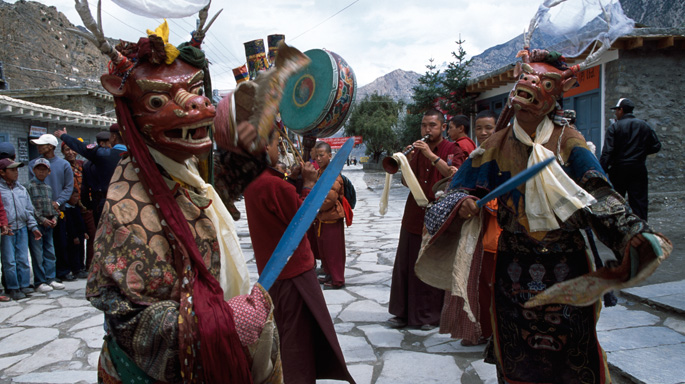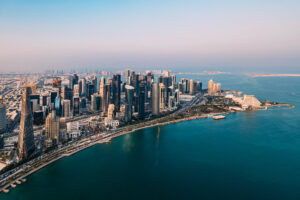Mani Rimdu : A popular festival celebrated in the Himalayas

By Bhesh Jung Badal —–
Mani Rimdu is a popular festival celebrated by Buddhists in the Himalayas to mark the founding of Buddhism by Guru Rinpoche Padmasambhava. This festival is celebrated on three different occasions at the monasteries of Tengboche, Thame and Chiwong .
Mani Rimdu is as great and important festival of Sherpa Community as Dasain of others. This festival is believed and celebrated for the good of all the Sherpas, and all the people of the world.
The name Mani Rimdu comes from Mani, the prayers to Cherensig, the Tibetian Buddhists deity of compassion, ril, the little red good pellets passed out to spectators, and du, the blessing of the pellets.
Mani Rimdu is many things to different people. The blessing from Tengboches head lama is their top priority for the Sherpas. For the lamas and monks, the ten day non–stop prayers are the main reason for Mani Rimdu. The colourful masked dances are usually the main attraction.
Mani Rimdu is one of the Sherpa festival that brings people together from many different villages. Friends and families from up and down the Khumbu Valley reunite for this accession. After each day’s official ceremonies villagers sing and dance long in the night. Despite a long night of song, dance and for some, drinking chhang (rice beer) most Sherpas are up early the next day for the main event.
There are three days of public events: The lama’s blessing ceremony, the mask dances, and elaborate final with a large bonefire. This celebrate the conclusion of ten days of prayers for the good of the whole world.
The schedule for celebrating Mani Rimdu is based on the Tibetian calendar. It is performed each year during the full moon period of the ninth month which usually falls from Mid–October to Mid–December. A similar festival takes place at Thame monastery in May or June and at Chiwang in Solu in December. Mani Rimdu and Dasain fall in the same season of the year. Likewise, “Ram Navami” second to Dasain, and Mani Rimdu like festival of Sherpas fall in the Season.
In the concluding day or the blessing day Sherpas start early walking from their home village to Tengboche with a great blowing of horns the ceremony starts in mid–afternoon. A procession of maroon–clad monks and the high Lama descends from the monastery to a stage in an open fields. After some opening prayers patrons who have donated money for celebrating Mani Rimdu are formally thanked. Then the crowed surges forward with eagerness to receive Lama’s blessing: Some holy nectar and the pellets for a long life and good fortune. By the time the line reaches the stage. It is a single life.
As twilight falls, the monks return to the temple or gompas and the crowd disperse to eat, drink and visit family and friends. Later in the evening, villagers gather at the temple courtyard for the happier folk dancing.
The next day, people get up early to have a good spot around the courtyard where the masked dance are to be performed. The sounds of blaring horns, flutes and conch shells and clashing cymbals announce the opening of the dance. The procession of monks playing instruments enters the courtyard. After a brief musical interlude, they return to the temple and the most dances commence. Each dance is related to prayers of the past ten days. Usually the main character in each dance is one of the gods to whom prayers have been offered.
The second dance, in which several monks wear costumes and block hats, is an offering to the gods for protection from illness accidents and bad spirits and to gain merit for all beings. A powerful dance follows by a masked monk performing the role of Dorje Troll’s, a fierce but benevolent aspect of Tibetan Buddhism’s founder. Guru Rinpoche Dorje Troll’s attendants then dance and present him with offerings.
The next dance reenacts the opening of the first monastery in Tibet. It represents Guru Rinpoche, who danced the blessing that dispelled spirits who chad obstructed the Monastery’s establishment. In the sixth dance, a dough figure representing evil is ritually killed by two dancers wearing block hats. They are by eight masked dancers in the roles of the protective gods.
June 2020 Image courtesy : NTB














